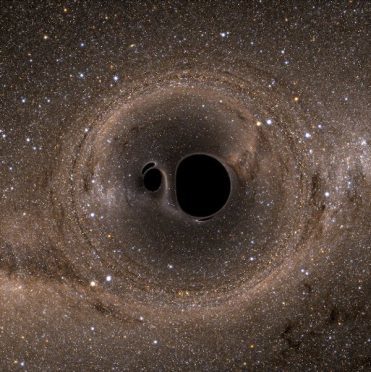Scientists have detected gravity waves, 100 years after they were predicted by Albert Einstein.
They’re ripples in spacetime, the very fabric of the universe. Albert Einstein predicted their existence in his General Theory of Relativity in 1916. Until now, they have only been a mathematical concept.
How are gravitational waves produced?
Gravity waves are generated by cataclysmic cosmic events, such as collisions between black holes or super-dense neutron stars, or massive stellar explosions.
What was the source of the gravitational waves detected by Ligo?
Two black holes, each packed with 30 times more material than the sun, spiralling together, colliding and fusing, in a distant corner of the universe 1.3 billion light years away. They could be not seen – scientists figured out what happened by studying the nature of the gravity waves.
How were the gravitational waves measured?
https://twitter.com/abc7marccr/status/697854310583898112/photo/1?ref_src=twsrc%5Etfw
The Ligo facility consists of two four kilometre pipes laid out perpendicular to each other in an L shape. A laser beam is fired through each pipe. As the gravity wave passes, it distorts space, causing tiny changes to the lengths of the pipes and the laser beams. As a result, the two beams are slightly out of step, creating a distinctive interference pattern which is measured using a system of mirrors.
The effect is really small – the equivalent of one 10,000th the width of a proton at the heart of an atom. To avoid disturbance, the laser beams are placed in remote locations away from noise and vibration.
https://twitter.com/thephysicsgirl/status/697857942947639298/photo/1?ref_src=twsrc%5Etfw
Why is the discovery important?
Scientists say it opens a whole new window on the universe. Gravity waves could help scientists investigate some of the most violent events in the universe, including phenomena that are currently unknown.
They could also shed a new light on mysteries such as dark matter and dark energy. Since it is quite likely that the Big Bang generated gravity waves, they might provide a glimpse of the birth of the universe.
